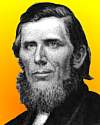
On 12 Aug 1812, Ephrain Ball was born, the American inventor and manufacturer whose “Ball's Ohio Mower and Reaper” was widely successful (1854). This machine was a leader in the change to double driving wheels. His factories annually produced up to 10,000 of this and later models.
In his day, he was a self-made man who was one of the world's benefactors to agriculture. If you are unfamiliar with his accomplishments, learn more from this short biography of Ephraim Ball from A History of American Manufactures (1866).
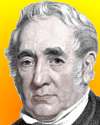
On 12 Aug 1848, George Stephenson died, the English engineer and inventor who was a principal pioneer of the railroad locomotive. The first railway he built ran from Darlington to Stockton. When it opened on 27 Sep 1825, large crowds saw him at the controls of the locomotive as it pulled 36 wagons filled with sacks of coal and flour. Today's book pick is: , by . The Stephensons carried Britain into the modern age with dramatic speed, transforming the pace and style of everyday life. The author, with his own practical knowledge of mechanical and civil engineering, is an experienced writer of biographies on several great British engineers, including Brunel and Thomas Telford, as well as Narrow Boat.
It is available from Amazon, typically about (As of earlier time of writing - subject to change.)
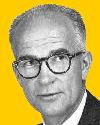 | Frequently, I have been asked if an experiment I have planned is pure or applied science; to me it is more important to know if the experiment will yield new and probably enduring knowledge about nature. If it is likely to yield such knowledge, it is, in my opinion, good fundamental research; and this is more important than whether the motivation is purely aesthetic satisfaction on the part of the experimenter on the one hand or the improvement of the stability of a high-power transistor on the other. |
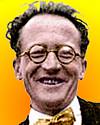 | I don't like it, and I'm sorry I ever had anything to do with it. [About the probability interpretation of quantum mechanics.] |
| no image | We look down on our research scientists … if they engage themselves in outside consultation, or if they choose to augment their income from projects of a practical nature. We implicitly promote the ivory tower, the alienation of the persons of insight from those who do things. |
| Before you look at today's web page, see if you can answer some of these questions about the events that happened on this day. Some of the names are very familiar. Others will likely stump you. Tickle your curiosity with these questions, then check your answers on today's web page. | |
| Births | |
 | On 12 Aug 1887, Erwin Schrödinger, an Austrian theoretical physicist, was born who contributed to the wave theory of matter and to other fundamentals of quantum mechanics. He shared the 1933 Nobel Prize for Physics with a British physicist. Can you name the scientist that shared the 1933 Nobel Prize in Physics with Schrödinger? |
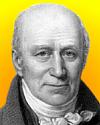 | On 12 Aug 1759, Thomas Andrew Knight was born, a British horticulturalist who initiated the field of fruit breeding. To investigate the geotropism of roots and stems, he invented a machine, rotating to simulate gravity with centrifugal force in either horizontal or vertical position. In each case, he noted the inwards towards the centre, or outwards, growth direction for the roots or stems. In each case rotating on this machine, in which direction did the roots grow? In which direction did the stems grow? (Towards the centre? Or away from the centre?) |
| Deaths | |
 | William B. Shockley (1910-1989) was an English-American engineer and teacher, who shared the Nobel Prize for Physics in 1956 for the development of an important improvement on another device, able to do the same function with much less bulk and more efficiency. What device did he invent? What did it replace? |
 | George Stephenson (1781-1848) was an English engineer and principal inventor of the railroad locomotive. In the Rainhill trials of 1829, there was a competition as to who could build the fastest locomotive. He won with his locomotive which traveled at an unheard of speed of 36 miles per hour. What was the name of his winning locomotive? |
| Events | |
 | On 12 Aug 1877, the American astronomer Asaph Hall discovered the first of two moons of Mars. A few days later, he observed a second moon. What name did he give this first-discovered moon of Mars? |
Thm.jpg) | In 1977, the Enterprise, the prototype for the space shuttle, made its first flight on its own within Earth’s atmosphere. It was being launched on the back of a Boeing 747, separated, and then touched down in California’s Mojave Desert. Thus, the space shuttle Enterprise passed its first solo flight test. What was the origin of the Enterprise name? |
 | In 1883, the quagga became extinct when the last mare at Amsterdam Zoo died. It was not immediately realised that she was the very last of her kind. There was confusion caused by the indiscriminate use of the term “Quagga” for similar animals. In fact, the true quagga had been hunted to extinction, without this being realised until many years later. What animal did the quagga resemble? |
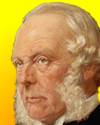 | In 1865, after studying Louis Pasteur’s germ theory of disease (that infections are caused by bacteria), a surgeon was the first use disinfectant during an operation. He introduced phenol (carbolic acid) as a form of disinfectant into his surgery; the higher standards of hygiene reduce the surgical death rate from 45% to 15%. He was the first medical person raised to the peerage. Can you name this surgeon? |
Fast answers for the previous newsletter for August 11: cathode-ray tube • an attendant had been feeding his laboratory chickens with cooked white rice instead of whole rice, Eijkman discovered by accident that diet produced a disease resembling beriberi in human beings • Andrew Carnegie • S.O.S..
 If you enjoy this newsletter, the website, or wish to offer encouragement or ideas, please send feedback by using your mail reader Reply button.
If you enjoy this newsletter, the website, or wish to offer encouragement or ideas, please send feedback by using your mail reader Reply button. Your click on a Facebook, StumbleUpon, or other social button on the site webpages is also a welcome sign of appreciation. Thank you for using them.
© This newsletter is copyright 2020 by todayinsci.com. Please respect the Webmaster's wishes and do not put copies online of the Newsletter — or any Today in Science History webpage. (If you already have done so, please remove them. Thank you.) Offline use in education is encouraged such as a printout on a bulletin board, or projected for classroom viewing. Online, descriptive links to our pages are welcomed, as these will provide a reader with the most recent revisions, additions and/or corrections of a webpage. For any other copyright questions, please contact the Webmaster by using your mail reader Reply button.
--
If you do not want to receive any more newsletters, Unsubscribe
To update your preferences and to unsubscribe visit this link
Executive Real Estate Business Class
-
"It was like a man with wings. It wasn't like anything you'd see on TV or in a monster movie." ...
About the publisher
Search This Blog
Blog Archive
-
▼
2020
(1542)
-
▼
August
(192)
- HISTORY: Lessons from the latest March on Washington
- New This Week on History News Network
- Discover lost cities with Nat Geo History. Subscri...
- On This Day for August 31 - Confederates evacuated...
- Newsletter for Monday 31 August.
- Face Masks Make you dumb (compliant) Economic des...
- August 31: Malaya Gains independence, Princess Dia...
- FAMILY: How to get your kid to wear a mask
- Roman numerals | Ancient empires | The battle of C...
- On This Day for August 30 - Historic spaceflight b...
- Newsletter for Sunday 30 August.
- August 30: Crossbow Outlawed, Nehru Requests Indep...
- The Compass: London
- On This Day for August 29 - New Orleans hit by Hur...
- Newsletter for Saturday 29 August.
- August 29: Treaty of Nanking, Second Battle of Bul...
- CORONAVIRUS UPDATE: These promising treatments are...
- PHOTOGRAPHY: Lives that matter, from the pietà to ...
- The Horrifying True Story Behind "Candyman," The Y...
- The Roundup Top Ten from History News Network
- On This Day for August 28 - Civil rights march on ...
- Newsletter for Friday 28 August.
- August 28: Tom Thumb Races a Horse, Scientific Ame...
- ANIMALS: When baby wombats become your roommates
- Give your kids the world! Subscribe now.
- Create remote resiliency with Britannica Kids
- On This Day for August 27 - The death of Titian, M...
- Newsletter for Thursday 27 August.
- Lockdown for you but not for the politically corre...
- August 27: Krakatoa Erupts and the End of Lord Mou...
- YOUR WEEKLY ESCAPE: Inside the world of transhuman...
- SCIENCE: Behind the hurricanes, wildfires, and bla...
- Demystified: What Does Gaslighting Mean?
- The Latest News from History News Network
- On This Day for August 26 - Joan of Arc's arrival ...
- Newsletter for Wednesday 26 August.
- Fear fatigue is more dangerous than COVID-19 plus
- August 26: Longbows, Cannons and Morris Mini-Minors
- For Your Eyes Only: America’s Spying Secrets
- 50+ Vintage Pictures Of Your Parents Being Cooler ...
- TRAVEL: Waiting for a silver lining
- On This Day for August 25 - Paris liberated, Sean ...
- Newsletter for Tuesday 25 August.
- August 25: French Arrive in Louisiana, James Cook ...
- HISTORY: Why the U.S. Postal Service matters
- Even Life-Long Learners Need Back-to-School Savings!
- Experience a 360-degree virtual tour of the Nat Ge...
- New This Week From History News Network
- On This Day for August 24 - Eruption of Mount Vesu...
- Newsletter for Monday 24 August.
- GeoEngineering Massive Drought WildFires + More Ma...
- August 24: Alaric I Sacks Rome, British Capture Wa...
- FAMILY: How you can support your kid's teachers—an...
- Genghis Khan | Edward the Confessor | The Spanish ...
- On This Day for August 23 - William Wallace execut...
- Newsletter for Sunday 23 August.
- August 23: 1st US Women's Rights Convention, Bin L...
- The Compass: U.S. National Parks
- On This Day for August 22 - Wars of the Roses ende...
- Newsletter for Saturday 22 August.
- August 22: Wars of the Roses Ends, Chennai Founded...
- CORONAVIRUS UPDATE: Your employer could require yo...
- PHOTOGRAPHY: Capturing a muted Russia
- The Unsung Heroes Who Fought For Women's Voting Ri...
- The Roundup Top Ten from History News Network
- On This Day for August 21 - French defeated at the...
- Newsletter for Friday 21 August.
- YOUR WEEKLY ESCAPE: A million people live in under...
- August 21: Mona Lisa is Stolen, the 50th US State ...
- ANIMALS: Soft and virus-y, the mink with COVID-19
- On This Day for August 20 - Viking 1 launched, Eer...
- Total Exposé! Watch the 2nd Plandemic Movie "InDoc...
- Newsletter for Thursday 20 August.
- August 20: The Dutch East India Company, Sun Yat-s...
- A Champion Will Be Crowned on 'Forged in Fire' Ton...
- SCIENCE: The robots have arrived
- The Latest News from History News Network
- On This Day for August 19 - Attempted coup against...
- Newsletter for Wednesday 19 August.
- August 19: Cease-Fire in the Iran-Iraq War and Gor...
- TRAVEL: Will new tech make flying safer now?
- Sail along with Ancient Explorers w/ Nat Geo History!
- On This Day for August 18 - Nineteenth Amendment r...
- Newsletter for Tuesday 18 August.
- August 18: Wilson's Ill-fated Neutrality, American...
- HISTORY: Breaking 'substantial barriers' with Kama...
- New This Week On History News Network
- On This Day for August 17 - Indonesia's declaratio...
- Newsletter for Monday 17 August.
- State of Tennessee orders Home visit checks on ALL...
- August 17: Division of Korea, Indonesian Independe...
- FAMILY: Preparing for this unusual school year
- Medieval baby names | Attila the Hun | Pederasty i...
- On This Day for August 16 - Leonel Fernández Reyna...
- Newsletter for Sunday 16 August.
- August 16: Deadly Chaos in Calcutta and the Last C...
- The Compass: New Zealand
- On This Day for August 15 - Independence for India...
- Newsletter for Saturday 15 August.
- August 15: The Mayflower Sets Sail, Indian Indepen...
-
▼
August
(192)
-
Blogroll
-
About
HistoryFact










0 comments:
Post a Comment